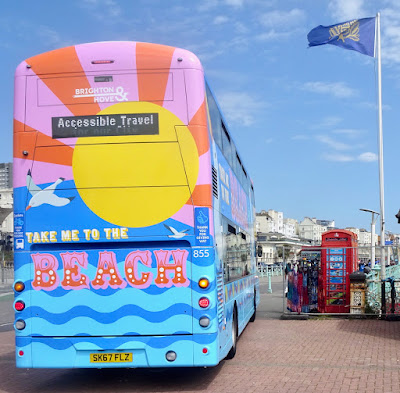On a bright salt-washed morning the blue clubhouse of Lagoon Watersports beside Hove Lagoon looks almost theatrical, its white lettering impelling passers-by to learn, improve, progress. The building, raised slightly above the path and fronted by a tangle of kayaks, Pico dinghies and wakeboard gear, has become one of the most recognisable structures on the Brighton Beach seafront. What began as a modest watersports base more than thirty years ago is now woven into the daily life of the lagoon and the lives of thousands who first stood on a paddleboard, hauled a sail upright or felt the sudden tug of a wake-cable here.
Lagoon Watersports was formally incorporated in 1989 and has been run by the same management since the mid-1990s. Its chosen setting, Hove Lagoon, is an artificial remnant of the old Salt Daisy Lake, a brackish hollow that was gradually formalised during interwar landscaping of the Kingsway (see Brighton Toy Museum website which is also the source of the photograph below). The company turned this shallow, wind-swept waterbody into a training ground for beginners, school groups and would-be sailors. Over the years its programmes expanded across two sites - sheltered lessons and wakeboarding at the lagoon, and yacht sailing and power-boat sessions from Brighton Marina.
The lagoon has regularly thrown Lagoon Watersports into the local press. When the first cable-tow wakeboarding system went live in 2011 it drew a flurry of interest as one of the earliest installations of its type in the UK. By 2013 the centre was running three cables, including a beginner line and a rail section that drew riders from across the region. Newspapers ran bright, summery photographs of young wakeboarders skimming across the lagoon, a striking contrast to the placid model-yacht scene once associated with the site.
There have been quirkier stories too. One Argus report captured the arrival of paddleboard yoga on the lagoon, describing early sessions wobbling across the water. Another covered a women’s watersports day that saw first-timers taking to kayaks and paddleboards in breezy conditions, relishing the sense of achievement even when the wind and chop made the lagoon feel more like open sea. These sat alongside the regular run of charity challenges on icy January mornings, youth groups completing multi-sport days in howling south-westerlies, and the occasional windsurfer being blown clean across the lagoon and into the reeds, to the delight of watching schoolchildren.The company’s daily rhythm sees staff usher in wetsuited school groups, kayaks carried to the slipway in lines, and the wake-cable’s soft mechanical hum drifting across the water whenever conditions are calm. The blue clubhouse stands at the heart of it all, part workshop, part briefing room, part symbol of Brighton and Hove’s multivarious beach culture.























.jpeg)













.jpeg)










